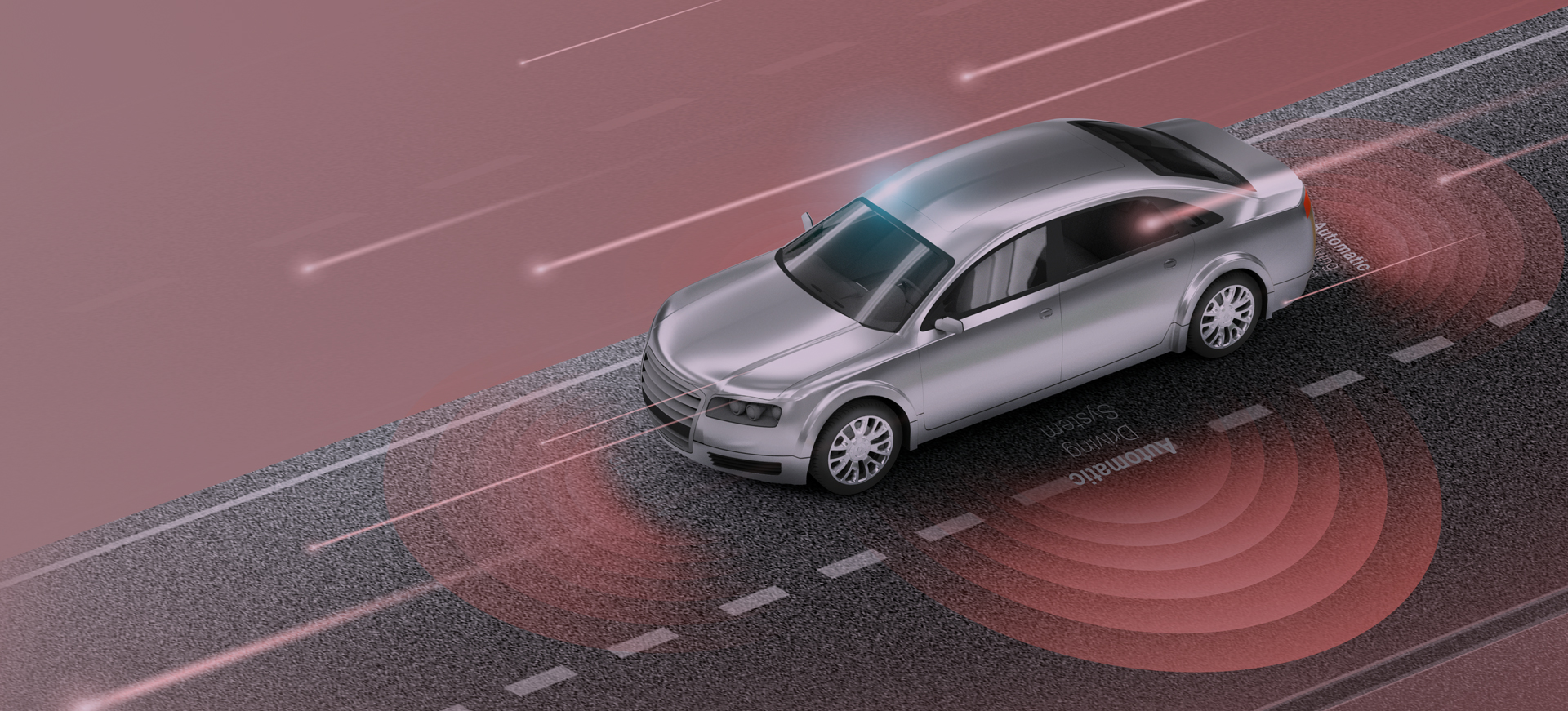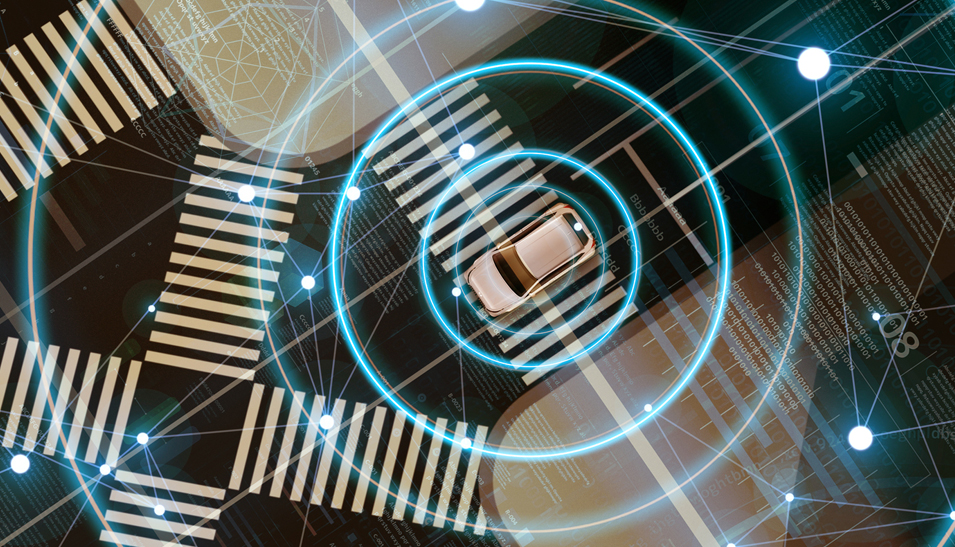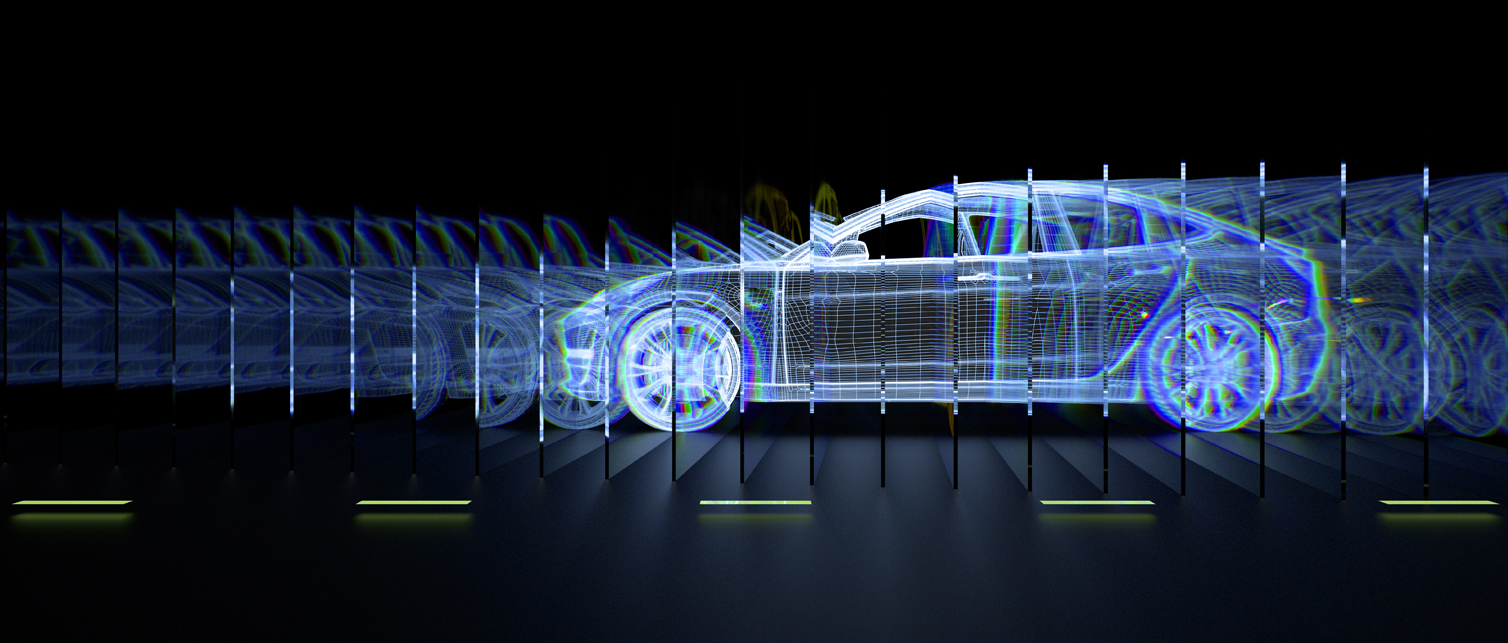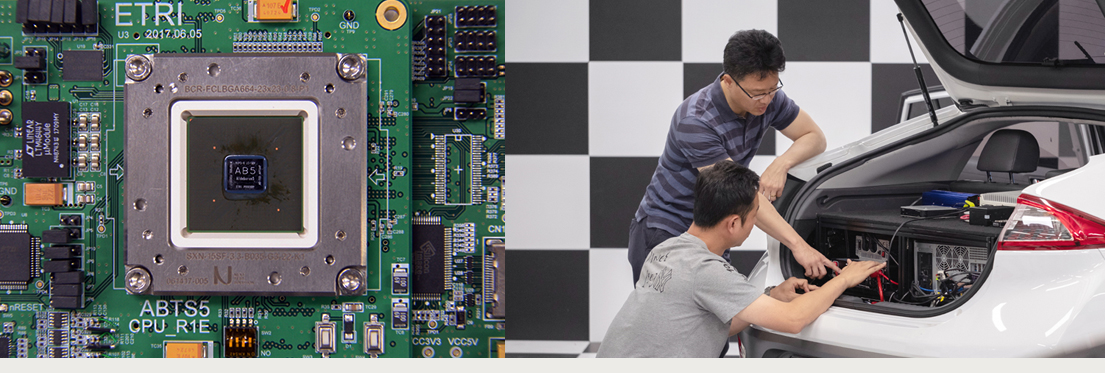
 th Anniversary
th Anniversary
The goal of intelligent robotics technology is to enable machines to make independent judgments about various situations, regulate its operation to ensure safety, and produce intelligent responses autonomously. This is to prepare for the aging society and disappearance of small towns in the future. The ETRI research team is currently developing Level 4 autonomous driving technology, which is capable of making accurate recognition, judgment, and response without human intervention. The research team acquired largest driving data in Korea, covering various road environments and cumulative driving distance of 100,000 km. The past achievements including four CI papers, three international conference papers, and seven technology transfers prove the excellence of ETRI's intelligent robotics technology.
Auto Driving System

Autonomous driving technology: where are we now?
Self-driving vehicles are receiving a lot of attention both in the Korean and international markets. The autonomous driving SW system, which operates the vehicle on behalf of the driver, goes through the processes of collecting and processing all data related to driving. In the autonomously driving vehicle, the software system that processes sensors and information is integrated with the driving system, delivering convenient and safe transportation services from the place of departure to the destination. Here, the convenient and safe transportation services mean the ability for the autonomously driving vehicle to accurately identify whether it is an obstacle or a pedestrian that is standing on its way beyond the basic ability to recognize the presence of an object on the road. Safe autonomous driving is only available when the vehicle is able to accurately recognize the surrounding environments, such as nearby obstacles and human movements and intentions, and is in control of its operation. In addition, a high-definition map function through which it can identify the route from the place of departure to the destination, current location of the vehicle, and the locations of lanes and intersections, is also an essential element for autonomous driving.
Autonomously driving cars are divided into six levels according to the level of automation and the ability to respond to errors. Level 0 indicates the absence of automated function where the driver is in full control. Level 1 and 2 refer to vehicles where a driving assistance system takes care of some observation and driving functions. Level 3 refers to self-driving cars that can identify the surrounding environments, but require driver's intervention in particular situations. Most of the self-driving cars that are currently available in the market are Level 2 autonomous driving vehicles. Level 4 indicates self-driving cars that does not require driver intervention or monitoring in road environments including complex urban roads. Level 5 refers to fully automated cars that do not require any driver intervention in all road environments including rural roads.
In the current phase of research and development, the driver must be present in the driver's seat in order to respond to possible errors in the autonomous driving software system. Uber and Waymo, which are currently operating self-driving taxi services, also train operators to pay attention to the system to prepare for unexpected situations. This is because accidents can happen when the operator ignores the system warning or does not respond to an intended attack. Meanwhile, research is being conducted to increase safety of self-driving technology by converging it with 5G technology to facilitate collaboration with the artificial intelligence and infrastructures that predict situations through learning.
Sensors, the eyes and ears of
autonomous driving cars
Most autonomous vehicles use cameras along with radar and lidar sensors. Autonomous vehicles that are currently available in the market use sensor cameras and radar sensors together for autonomous-driving. In what situations are those sensors that act as the eyes and ears of autonomous driving cars used?
Firstly, it takes two processes for a self-driving car to recognize traffic signs: detecting with the camera first and then classifying it. The camera can read information such as lanes and traffic signs, so it recognizes complex environments on the road, such as objects in front, lanes, traffic lights, and pedestrians. Autonomous driving becomes more advanced when artificial intelligence is integrated here. It can classify permanent objects installed on the streets and other road environments through Big Data to make predictions. The camera image recognition technology based on machine learning can detect information in real time, including steepness and curves of the road, and traffic signs in the navigation data.
In addition, there are major sensors that support overall recognition of autonomous vehicles: the lidar and radar. The two types of sensors operate simultaneously to measure the distance between an object. Lidar identifies the location of a specific point by firing a laser and then calculating the focus image and the return travel time. It is possible to calculate the distance, speed, and direction through this. Radar emits electromagnetic waves, and then measures the time it takes for the electromagnetic waves to return. It detects the distance and speed of nearby objects as well.
Sensors, in other words, directly detect the external driving environments. No matter how advanced camera, radar, and lidar may be, it is not easy to avoid accidents when nearby vehicles suddenly change lanes or when there is no clear view of the surrounding environments. For this reason, the Vehicle to Everything (V2X) technology that enables constant communication between vehicles, infrastructures, and people needs to be developed together. V2X refers to a technology through which vehicles can exchange information with other vehicles, mobile devices, pedestrians, and infrastructures through wired and wireless networks. V2X is a base technology for future automobiles connected through communication, as well as a core technology that will enable full automation of transportation infrastructures.

Intelligent robotics,
leading the age of self-driving cars
To prepare for the upcoming age of self-driving cars, ETRI is operating the Intelligent Robotics Research Division. The Intelligent Robotics Research Division consists of four research labs ─ Autonomous Driving Intelligence Lab, Human-Robot Interaction Lab, Intelligent Robot Lab, and Intelligent Location and Navigation Lab ─ and Ulsan Intelligent Robotics Lab.
The Autonomous Driving Intelligence Lab specializes in collection of data for autonomous driving intelligence in the field of smart vehicle technology, core SW technology for machine learning and V2X-related connected recognition, judgment, and control, and the development of standards in the field.
The Human-Robot Interaction Lab focuses on developing user information recognition (identity, location and behavior) technology, object type and pose recognition technology, and human-robot social interaction technology.
The Intelligent Robot Lab studies robot task intelligence to help people in incomplete and uncertain indoor and outdoor environments, robot mobility intelligence to guide ways to robots without prior information, and abnormal situation recognition intelligence through continuous observation and multi-layered probabilistic modeling. In addition to developing such core technologies, the Lab is researching robot knowledge integration service technology based on analysis and inference.
The Intelligent Location and Navigation Lab mainly focuses on the development of personalized intelligence technology and navigation intelligence technology based on human and object profiles (location, state, recognition and preference) in an autonomous intelligence space and the spatial and temporal information.
The Ulsan Intelligent Robotics Lab conducts field-oriented customized research and development projects in order to secure new growth engines for the local industries in Ulsan. The goal of the Lab is to support collaborative research between ETRI and SMEs, and to build a creative ICT convergence research cluster in Ulsan.
As such, intelligent robotics technology that will lead the age of self-driving cars is the product of various cutting-edge technologies from a range of fields. This is because it is a technology that is directly connected to our lives. The ETRI researchers, who are aware of the importance and necessity of intelligent robotics technology more than anyone, are working hard in their own field. Through their endeavor, the age of self-driving cars to come will be safer and more complete.

